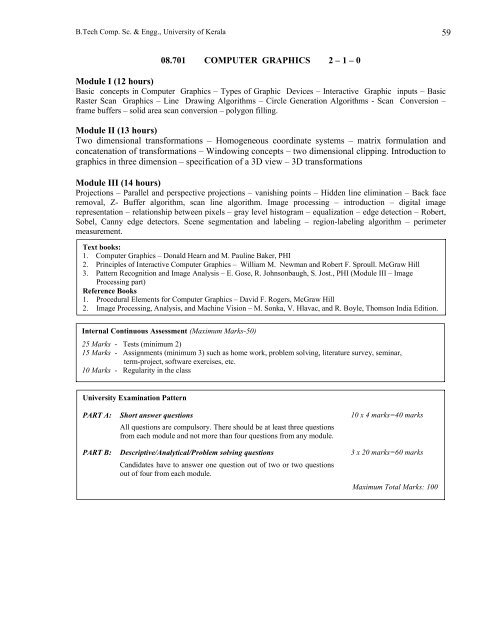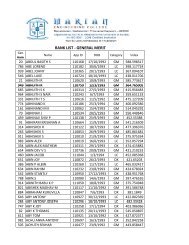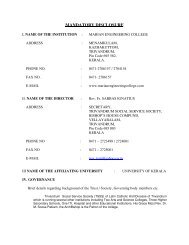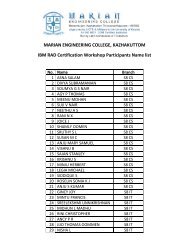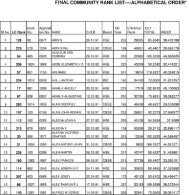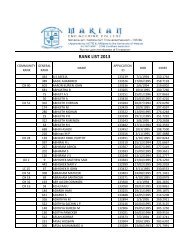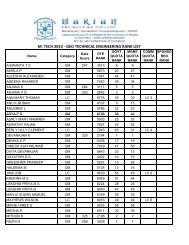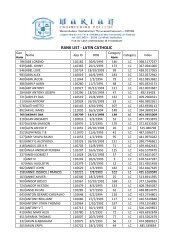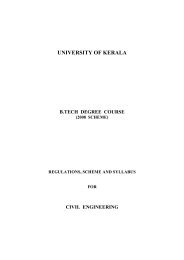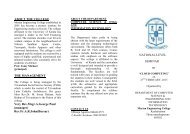UNIVERSITY OF KERALA - Marian Engineering College
UNIVERSITY OF KERALA - Marian Engineering College
UNIVERSITY OF KERALA - Marian Engineering College
Create successful ePaper yourself
Turn your PDF publications into a flip-book with our unique Google optimized e-Paper software.
B.Tech Comp. Sc. & Engg., University of Kerala 59<br />
08.701 COMPUTER GRAPHICS 2 – 1 – 0<br />
Module I (12 hours)<br />
Basic concepts in Computer Graphics – Types of Graphic Devices – Interactive Graphic inputs – Basic<br />
Raster Scan Graphics – Line Drawing Algorithms – Circle Generation Algorithms - Scan Conversion –<br />
frame buffers – solid area scan conversion – polygon filling.<br />
Module II (13 hours)<br />
Two dimensional transformations – Homogeneous coordinate systems – matrix formulation and<br />
concatenation of transformations – Windowing concepts – two dimensional clipping. Introduction to<br />
graphics in three dimension – specification of a 3D view – 3D transformations<br />
Module III (14 hours)<br />
Projections – Parallel and perspective projections – vanishing points – Hidden line elimination – Back face<br />
removal, Z- Buffer algorithm, scan line algorithm. Image processing – introduction – digital image<br />
representation – relationship between pixels – gray level histogram – equalization – edge detection – Robert,<br />
Sobel, Canny edge detectors. Scene segmentation and labeling – region-labeling algorithm – perimeter<br />
measurement.<br />
Text books:<br />
1. Computer Graphics – Donald Hearn and M. Pauline Baker, PHI<br />
2. Principles of Interactive Computer Graphics – William M. Newman and Robert F. Sproull. McGraw Hill<br />
3. Pattern Recognition and Image Analysis – E. Gose, R. Johnsonbaugh, S. Jost., PHI (Module III – Image<br />
Processing part)<br />
Reference Books<br />
1. Procedural Elements for Computer Graphics – David F. Rogers, McGraw Hill<br />
2. Image Processing, Analysis, and Machine Vision – M. Sonka, V. Hlavac, and R. Boyle, Thomson India Edition.<br />
Internal Continuous Assessment (Maximum Marks-50)<br />
25 Marks - Tests (minimum 2)<br />
15 Marks - Assignments (minimum 3) such as home work, problem solving, literature survey, seminar,<br />
term-project, software exercises, etc.<br />
10 Marks - Regularity in the class<br />
University Examination Pattern<br />
PART A: Short answer questions 10 x 4 marks=40 marks<br />
All questions are compulsory. There should be at least three questions<br />
from each module and not more than four questions from any module.<br />
PART B: Descriptive/Analytical/Problem solving questions 3 x 20 marks=60 marks<br />
Candidates have to answer one question out of two or two questions<br />
out of four from each module.<br />
Maximum Total Marks: 100


